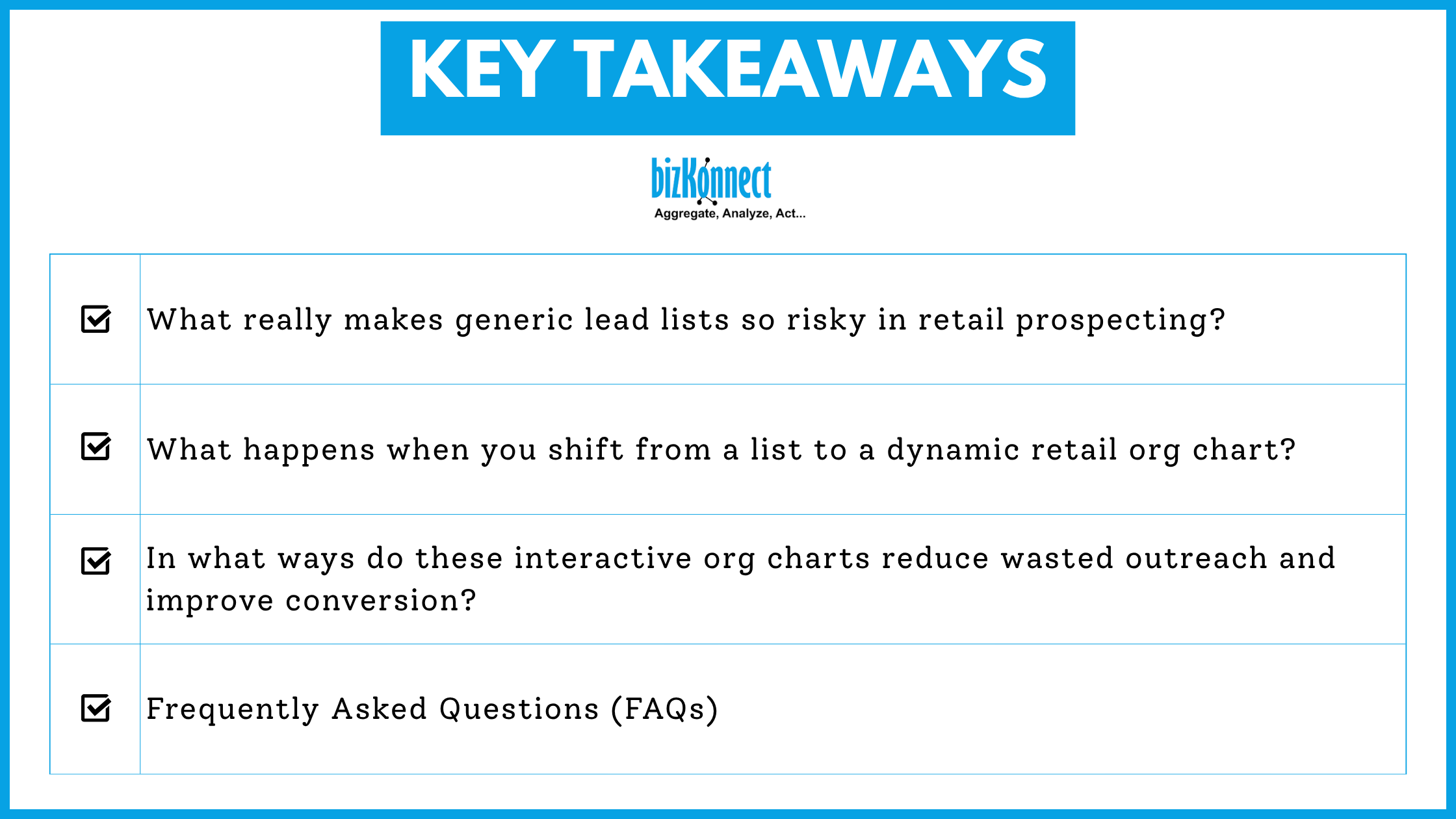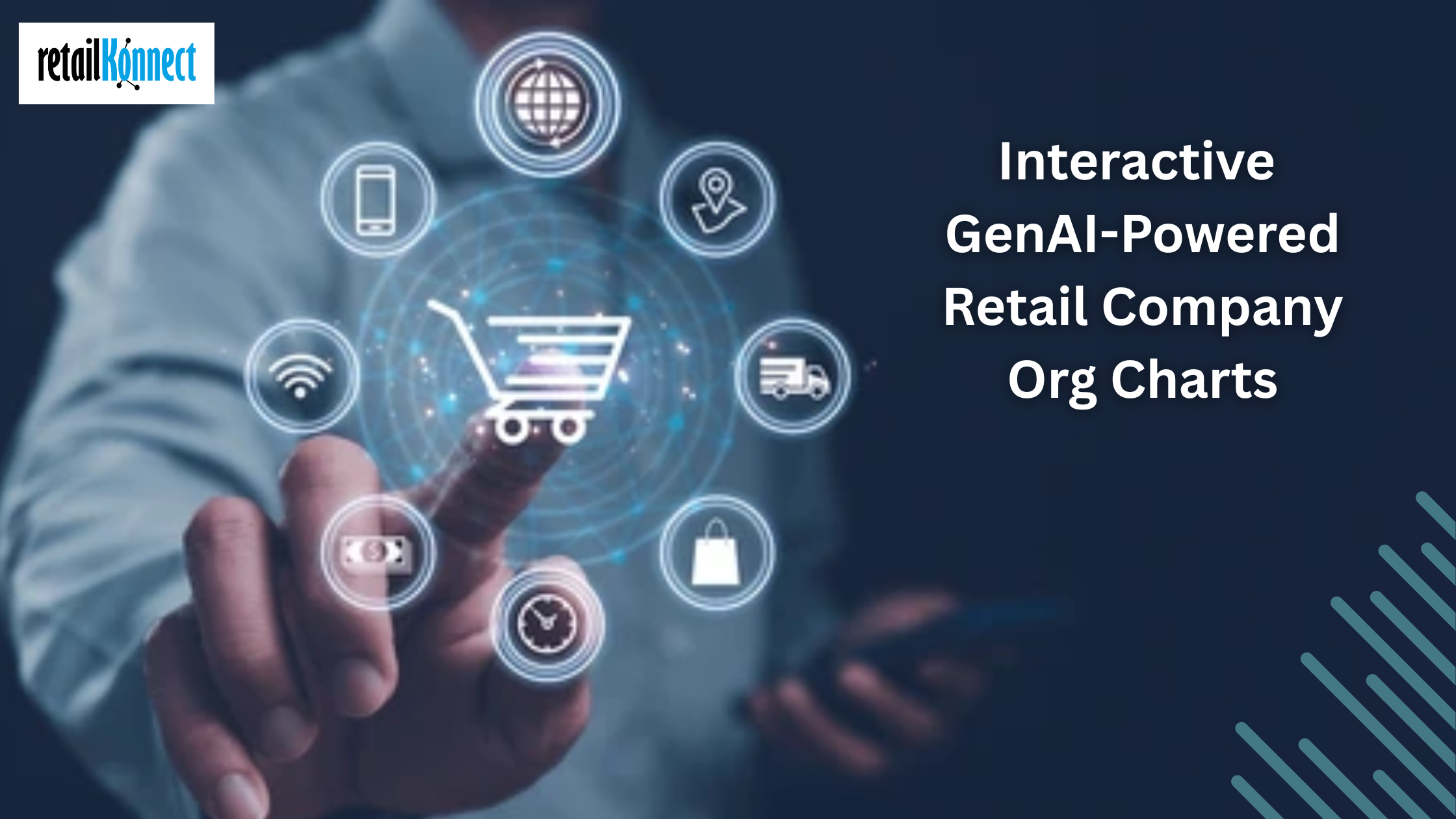From the first outreach to a major retail chain to every follow-up you send, there’s a hidden drain in the process: generic lead lists that simply don’t show the changes. What can feel like solid pipeline building often turns into outreach fatigue, low response rates, and wasted effort.

The solution here is leveraging dynamic GenAI-driven retail company org charts that transform how you connect and convert. It helps you pinpoint the right stakeholders, understand their reporting relationships, and craft meaningful multi-threaded campaigns in large retail accounts.
As we move on, let’s first understand what really makes generic lead lists so risky in retail prospecting?
It starts with the assumption that having contacts means having opportunity because every person in that list is relevant for your solution. But in retail, whether you’re working with an ecommerce organizational chart for online-first brands or a complex retail enterprise org chart across multiple geographies; that assumption quickly falls apart.
Many lead lists are outdated with incorrect titles, departments, or companies. Research shows poor lead quality remains a top complaint: 42% of sales reps say inbound leads are of poor quality. And targeting the wrong audience is another major issue: 41% of prospectors admit they don’t reach the right people
Retail decision-making layers are complex: merchandising, buying, operations, store formats, digital commerce, supply chain. Generic lists often miss the right role or include someone who has moved on. The result is often low pickup rates, minimal engagement, and a prolonged sales cycle. That translates into wasted marketing spend, frustrated teams, and missed opportunities.
What happens when you shift from a list to a dynamic retail org chart?
The moment you replace a flat lead list with an interactive GenAI-driven org intelligence from “retail org chart” or “retail company departmental chart”, you start working with context. You see how the departments connect, who reports to whom, and which functions matter for your offer.
Here’s what changes:
- Verified contacts: No guessing titles or reusing old emails as contacts are tied to current roles, reducing bounce rates.
- Multi-threaded outreach: Visual charts show how the Head of Digital Commerce reports to the Chief Retail Officer, who reports to the Regional VP. It allows engagement with multiple stakeholders in a single account.
- Focused outreach: Identify the exact department where your solution adds value. For example, supply chain for a store rollout or digital commerce for an ecommerce business organizational structure.
- Faster qualification: Instead of waiting weeks to locate the decision-maker, you enter the account with actionable insights, moving quickly to meaningful conversations.

In what ways do these interactive org charts reduce wasted outreach and improve conversion?
When you work from an actionable org chart rather than a static list, several inefficiencies disappear:
- No more “spray and pray” outreach because instead of emailing 200 titles hoping one will respond, you target 20 verified contacts with a role in your solution.
- Fewer dead end contacts because you have context. For instance, you know that “VP Ecommerce” is the decision-maker for omnichannel transformation in that particular account, so you don’t waste time on someone without influence.
And in the end, what you see is:
- Better personalization because knowing a stakeholder’s role within the hierarchy enables more tailored messaging: “I see you lead digital commerce growth across your 150-store chain” rather than “Hope all is well.”
- Shorter sales cycles because by engaging multiple relevant stakeholders simultaneously, you reduce back-and-forth and avoid being blocked by a gatekeeper later.
- Higher conversion rates because verified data plus organizational context means you are more likely to connect with someone ready and relevant within targeted retail accounts.
This shift from generic contact lists to contextual, actionable organization maps is the defining difference between average sales performance and exceptional growth in retail prospecting.
However, with the challenges of traditional lead lists and the dynamic solution of GenAI-driven retail company org charts, certain questions naturally emerge about implementation and impact. Here are common ones answered briefly.
Frequently Asked Questions (FAQs)
Q1. How different is a “retail org chart” from a standard contact list?
A retail company org chart shows how roles and departments connect. For example: how Buy-Merchandising links to Digital Commerce and Store Operations. While a standard list is just names and titles, often without context. The chart gives you structure which matters in retail.
Q2. Can I still use lists if I map them into an org chart afterwards?
Yes, but you’d incur manual work. The advantage of a purpose-built actionable org chart is that the mapping and context are built-in. The manual option tends to lag and miss changes.
Q3. What size of retailer benefits most from this approach?
Large retailers with many departments and reporting lines benefit most. But even mid-size retailers with ecommerce arms can gain strong value because complexity exists whenever multiple functions and channels converge.
Q4. How does an interactive org chart support multi-threaded outreach?
Because the visual shows multiple stakeholders in one account, you can plan outreach paths: champion, decision-maker, influencer, implementer. You can engage multiple contacts in parallel rather than sequentially. The depth of structure (e.g., department-by-department) is what enables that.
Stop guessing the org structure. See how BizKonnectreveals decision chains using GenAI. FREE SAMPLE.